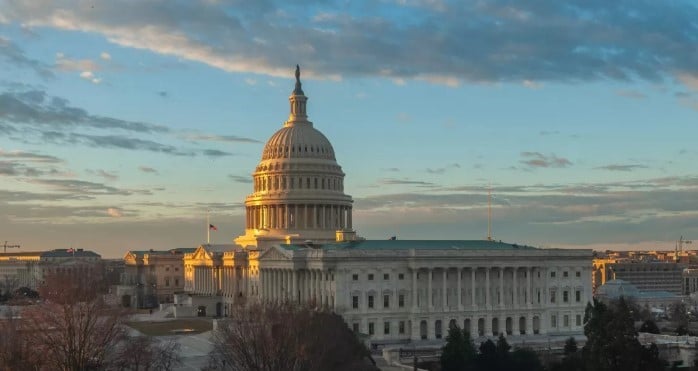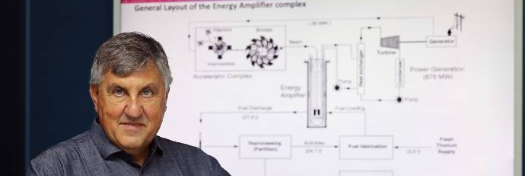New Nuclear Now: Quarterly Newsletter
Innovation, Insight, and Impact.
Welcome to the First Issue of ‘New Nuclear Now’
The name says it all—New Nuclear Now—because the time for action is now.
With global energy demand rising and the urgency to hit climate goals intensifying, nuclear energy is stepping up as a critical solution.
Advanced nuclear technologies, including small modular reactors (SMRs) and advanced modular reactors(AMRs), are emerging as game-changers in delivering clean, reliable power at scale.
This, along with the rapid advancements and growing excitement around fusion, means there has never been a more exciting time for the sector.
Here’s what you can expect in every issue of New Nuclear Now:
- Five Key News Headlines: Major developments in nuclear energy for 2025
- Exclusive Interview: Insight conversations with industry leaders (This issue: Professor Francis Livens)
- In-depth Analyses: Exploring key projects and technologies that are transforming the industry
At PACE, staying ahead isn’t just about keeping up—it’s about leading the way. We’re excited to share this journey with you.
Let’s dive in.
Exclusive Interview: UK Nuclear Sector State of Play with Professor Francis Livens

About Professor Francis Livens
Professor Francis Livens is a prominent figure in the UK nuclear sector, with vast experience in nuclear research, policy, and advisory roles. As Director of the Dalton Nuclear Institute at the University of Manchester, he leads nuclear science research and education, while also serving as a Non-Executive Director at the Nuclear Decommissioning Authority (NDA).
With a deep background in radiochemistry and nuclear materials, particularly plutonium, Professor Livens contributes significantly to shaping the UK's nuclear strategy. His expertise offers invaluable insights into the future of the nuclear industry.
Q: How do you believe public perceptions of nuclear energy have evolved over the past five years?
Francis:
“You often hear about the ‘donut effect’ when it comes to nuclear plants. Those living near a facility tend to be supportive—they know the workers, understand the benefits, and recognise the high safety standards. However, as you move further out, awareness drops, and opposition can rise. People who live far away often simply don’t care.
“For Small Modular Reactors (SMRs) and Advanced Modular Reactors (AMRs), the challenge is they won’t be located in traditional nuclear communities. You’ll be introducing nuclear energy into areas with no prior experience, which means a strong focus on communication and education to build trust. If that’s not done well, it could lead to significant challenges.”
Q: Do you think the UK’s regulatory framework is prepared for the increase in nuclear development over the next 10 to 25 years?
Francis:
“It's a bit of both. The UK’s regulatory framework is well-respected, with a solid process in place. The Generic Design Assessment (GDA) is thorough, and if you're well-prepared, things can move swiftly. However, if you come in unprepared, it can be a lengthy and challenging process.
“The real issue is that the demand for regulatory approvals is likely to surge, and the system wasn’t designed for that kind of volume. The government controls the number of GDA slots, which helps manage workload but can also create bottlenecks in the system.”
Q: Why do nuclear projects take so long, and what can be done to speed things up?
Francis:
“We managed to build an atomic bomb in five years, but today, we’d still be debating the colour of the paint on the gates. Bureaucracy has made the process slow and costly.
“One major issue is the overwhelming amount of documentation. For example, one risk assessment can involve over 50 people reviewing it. Eventually, this creates delays and actually increases risk due to a lack of accountability.
“To make nuclear competitive, we need to streamline decision-making, reduce unnecessary paperwork, and accept that some level of risk is unavoidable. This isn’t about cutting corners on safety but about focusing on what truly adds value.”
Q: Are enough efforts being made to attract new talent into the nuclear industry?
Francis:
“We’ve been talking about the nuclear skills gap for 20 years, but we’ve never truly tackled it. The industry tends to recruit from a very small pool, focusing on the same top-tier universities and ignoring a huge segment of potential talent.”
“Rather than fighting over the same three bright kids from a grammar school, go find ten equally bright kids in an underrepresented school up the road. There’s so much untapped talent, but we haven’t been proactive in reaching them.”
“PACE’s approach—bringing in people from other regulated industries like marine, defense, and specialty chemicals—is exactly what we need. Many of these skills transfer directly to nuclear, and they bring fresh perspectives that can improve efficiency.”
Q: How important are SMRs in meeting the UK’s 2050 nuclear capacity goals?
Francis:
“They’re absolutely critical. The UK wants 24 GW of nuclear by 2050, but even if Hinkley, Sizewell, and another large-scale project are completed, that still leaves a huge gap. The only way to fill it is with SMRs.”
“To hit that target, we’d need to build at least one Rolls-Royce SMR per year from now until 2050. That sounds ambitious, but once you reach scale—once you’ve built 10 or 20 of them—you can double the pace. They’re smaller, factory-built, and much more scalable than gigawatt-scale reactors.”
Q: Do you think the UK will reach net zero by 2050?
Francis:
“It’s achievable, but it requires a level of national commitment that we haven’t seen yet. Look at offshore wind—the government made clear decisions, set targets, and sent strong demand signals to the market. Nuclear needs the same approach.”
“Right now, we’re still in a mindset of ‘the market will decide.’ But the realty is that the government plays a huge role in shaping that market. If we want net zero, we need strong leadership, clear investment, and long-term planning.”
Q: What does the UK nuclear landscape look like in 25 years?
Francis:
“There are two possible futures. Either the UK commits, backs SMRs, develops its own technology, and becomes a world leader—or we hesitate, import all our SMRs from overseas, and lose the economic benefits.”
“The French made a bold commitment to nuclear in the ‘70s, and now they have energy security. We need that level of clarity and decisiveness.”

Key Nuclear Energy Developments in 2025 So Far
In this section, we highlight some of the most impactful nuclear energy stories emerging this year. From South Korea’s bold plans for new reactors and SMRs to advancements in microreactor technology and regulatory shifts in the U.S., these developments are shaping the future of nuclear power. We take a closer look at the investments, innovations, and strategic moves that are setting the stage for the next wave of nuclear energy solutions, with global implications for supply chains, workforce needs, and clean energy goals.

South Korea's New Nuclear Strategy: SMRs and Reactor Expansion
South Korea has finalised its long-term energy strategy, committing to three new nuclear reactors, including its first Small Modular Reactor (SMR), as part of an effort to increase nuclear energy’s share to 35% of its electricity mix. This major shift underscores the country’s dedication to balancing energy security with decarbonisation goals. The decision is expected to influence global nuclear supply chains and impact workforce dynamics, further solidifying nuclear’s role in the future energy landscape.

NRC Reduces Licensing Fees to Boost Advanced Nuclear
To accelerate the deployment of Small Modular Reactors (SMRs), the U.S. Nuclear Regulatory Commission (NRC) has slashed licensing fees for advanced reactors by over 50%. This move aims to lower costs, encourage innovation, and make nuclear projects more financially viable, ultimately attracting more private-sector investment and fostering competition in the rapidly expanding sector.

X-energy Secures $700M Investment from Amazon
X-energy, a leading SMR developer, has secured $700 million in funding from Amazon’s Climate Pledge Fund. This investment underscores the growing involvement of tech giants in nuclear energy, driven by the increasing demand for reliable, clean power to support AI and data centre growth. The deal further strengthens the position of SMRs as a key solution in the global energy transition.

Nano Nuclear Expands with USNC Acquisition
Nano Nuclear Energy has strengthened its position in the microreactor sector with the acquisition of Ultra Safe Nuclear Corporation (USNC). This move combines USNC’s advanced Fully Ceramic Microencapsulated (FCM) fuel technology with Nano Nuclear’s ZEUS and ODIN microreactor designs, creating new opportunities for accelerating commercialisation. The acquisition positions Nano Nuclear to meet the growing demand for mobile, modular nuclear solutions, with expanded applications across defence, industrial, and remote energy sectors.

Newcleo Advances Lead-Cooled Reactor Project in France
Newcleo has started acquiring land for its first 30 MWe industrial demonstrator, marking a key step in the commercialisation of advanced reactor technology. This project underscores France's commitment to next-gen nuclear and could pave the way for similar initiatives across Europe.
Conclusion
This discussion underscores the opportunities and challenges facing the UK nuclear sector. SMRs have the potential to revolutionise energy, but their success hinges on:
- Clear government commitment
- Regulatory agility
- Industry collaboration
- A growing talent pool
At PACE, we are committed to driving the energy transition by meeting the workforce needs of the industry. As nuclear evolves, we’ll continue to connect top talent with innovative projects worldwide.
If you'd like to explore how we can support your hiring strategy for 2025 and beyond, please get in touch.
Antony Harding
Sales Director
antony@pace-people.com
+44(0) 203 8543 166
- About us
- Job search
- Join us
- Upload CV
- Hiring Brief
- Register
- Contact us
- Login
- Privacy policy
- +44 203 854 3160
- info@pace-people.com
- Sustainable Workspaces, County Hall, 5th Floor, The Riverside Building, Belvedere Road, SE1 7PB
Built by huzzah!

